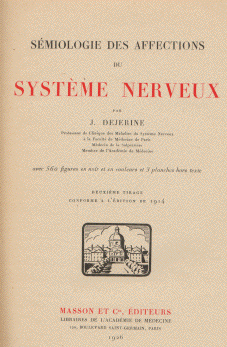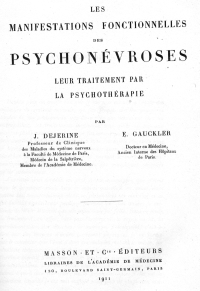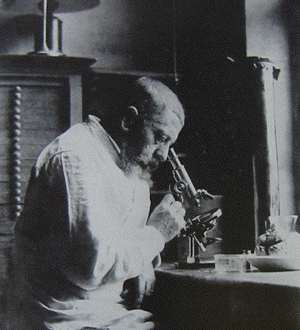 -
- "In Paris, you always can advance
yourself by work and entusism. You don't need
any strings. You are the product of your
work". These words of Jules
Déjérine were borne out by his
own career.
-
- This young Frenchman was born and raised
in the provincial atmosphere of Geneva,
Switzerland, where his father was a carriage
proprietor. In school in earlier years Joseph
Jules was better known as a boxer and
swimmer, and for his fishing on Lake
Léman, than for his academic
accomplishments, but all this changed when he
became attracted to biology and comparative
anatoiny. In 1871, when twenty-two years old,
he decided that he should pursue his clinical
studies in Paris. He set out for that great
metropolis in a third-class compartment, with
no more than a brief introduction to Vulpian
given him by Prévost, and arrived in
the midst of the turmoil created by war and
revolution. Unswervingly he set out to reach
his goal and was to prove Vulpian's most
distinguished pupil.
-
- His career was punctuated by appointments
to high position and a succession of
brilliant works, connected both with the
Salpêtrière and the
Bicêtre. As a climax he was elected, in
1910, Professeur de clinique des maladies du
système nerveux à la
Faculté de Médicine.
-
- Dejerine's masterpieces include his
studies on nervotabès
périphérique, progressive
muscular dystrophy (with Landouzy),
Friedreich's disease (with
André-Thomas), progressive
hypertrophic interstitial neuritis (with
Sottas and André-Thomas),
olivopontocerebellar atrophy (with
André-Thomas), and the thalamic
syndrome (with Roussy-it was, above all,
Dejerine who discovered the role of the
thalamus in hemianesthetic syndromes).
Perhaps the most lasting achievements were
his Anatomie des centres nerveux (Paris,
Rueff, 1890-1901) and Sémiologie des
affections du système nerveux (Paris,
Masson, 1914). He was as modern as many today
in his view that the mesencephalic reticular
formation continues forward in the
diencephalon to the septal region. Further,
Dejerine was one of the pioneers in the study
of localization of frunction in the brain,
having first shown, with Vialet, that word
blindness may occur as the result of lesions
of the supramarginal and angular gyri. Among
his pupils were Roussy, Bernheim,
André-Thomas and Alajouanine.
-
- Although Dejerine is best known for his
contributions in the field of organic
neurololoy, his interest in functional
disorders of the nervous system was also
keen, and was greatly stimulated by his
friendship with Paul Dubois of Bern, His
vacations always brought him back to the
landof hls birth, to his place at Thalgut,
near Bern, where his simple tastes and
fondness for the rustic life found complete
satisfaction. Robert Bing (1878-1956),in his
warm-hearted tribute to Dejerine, tells that
during this period Dejerine developed many of
his ideas of psychotherapy which were applied
by him with such remarkable success. Later
on, Dubois's and Dejerine's views began to
diverge, the latter insisting that the
personality of the therapist was of extreme
importance.
-
- He told his students: "It is rare that
you will be able to use subtle logic; it is
your heart that carries you along-if I may
express myself thus-and much more than your
reason. In man, emotion is almost everything
and reason very little."
- In the wards made fanious by Charcot, it
was inspiring, to me as to the others who
were in his service In 1900-01 to note the
earnest, simple, direct way in which Dejerine
explained the basis of symptoms and the
encouragement that he gave his patients. In
the outpatient department he was equally
effective. On one occasion, a young woman was
being examined and her maladjustment to life
was discussed with great frankness. The
question arose of her relations with her
lover, who was present with her. She
described one of her dreams in which a
phallic symbol played a prominent part. A
certain slang word she used brought forth a
hearty laugh from the audience. The professor
informed the audience that they were not here
to be amused.
-
- Life with Dejerine was always
stimulating. At the meetings of the
Société Neurologique of Paris
the presentations were terse and the
discussion at times tinged with biting
sarcasm. Speakers had their gloves off.
-
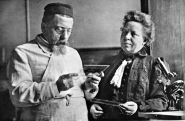 -
- Dejerine owed much to his wife, Augusta
Marie Klumpke (1859-1927), one of the
brilliant sisters of a famous San Francisco
family, whom he married in 1888. She had
studied medicine in Paris, and through
intellect, courage and persistence, became
the first woman to receive the title of
"interne des hôpitaiix" (1887), in the
face of great opposition, finally overcome by
Paul Bert, then Minister of Public
Instruction. The Dejerine marriage presented
the spectacle of two intellectual giants
collaborating and inspiring each other. Only
the Curies and the Vogts could boast of
comparable achievements. When Dejerine died
during the dark hours of World War 1, having
spent himself in the exhausting service of an
army hospital, it was his wife who carried on
the bulk of his work both in practice and in
research.
- It was most fitting for the members of
the Fourth International Neurological
Congress (Paris, 1949) to celebrate the
centennial of birth, to hear at the Sorbonne
a discourse on Dejerine by
André-Thomas, to wear the medallion
struck off in his honor and to join his
daughter Mme le Dr Sorrel-Dejerine, in laying
a wreath in his grave.
- Edwin G. Zabriskie
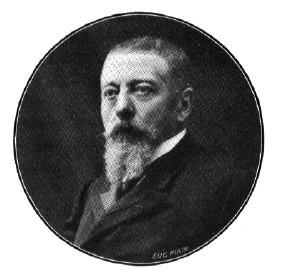 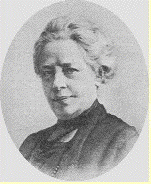 -
-
 -
- La visite du matin du professeur
Jules Déjérine salle Pinel,
salle d'isolement et de psychothérapie
de la Salpétrière
1910
-
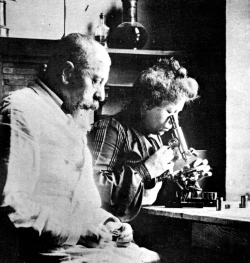 - Augusta
Déjérine-Klumpke au
laboratoire
-
- Madame
Déjérine-Klumpke
1859-1927
- In 1877 four sisters, the Misses Klumpke,
arrived in Paris from Lausanne. They were of
American origin but had been educated in
Switzerland.
-
- Augusta Klumpke, the future physician,
was born at San Francisco on October 15th,
1859. She was the most famous of the four,
though all the sisters displayed great
ability and became well known in Paris, one
as an artist, another as a musician, and the
third as a Doctor of Science.
-
- Augusta decided to enter the medical
profession. Those were pioneer days for
medical women, and she had a hard struggle to
overcome the prejudices of the French
teachers. Eventually her perseverance was
rewarded, and the Professor of Medicine
accepted her as a student. Miss Klumpke
proved a model pupil. Her brilliance was
extraordinary. While a student, she described
what is known to-day as "Klumpke's
paralysis."
-
- In the course of her studies she made the
acquaintance of Jules Déjérine,
a rising young neurologist. She married him
while she was a final-year student. She
obtained her M.D. degree in 1888. Known as
Madame Déjerine-Klumpke, she helped
her husband in his great work on the anatomy
of the central nervous system.
Déjérine became Professor of
Neurology and achieved, world-wide fame. He
died in 1917, worn out by his work during the
War.
-
- Madame Déjérine-Klumpke
founded a laboratory to perpetuate his memory
and to carry on his research work. Held in
esteem throughout France, she was President
of the société de Neurologie an
an Officier of The legion d'honeur. she died
in 1927, leavong one daughter, who was
married to the french surgeon Etienne
Sorrel.
-
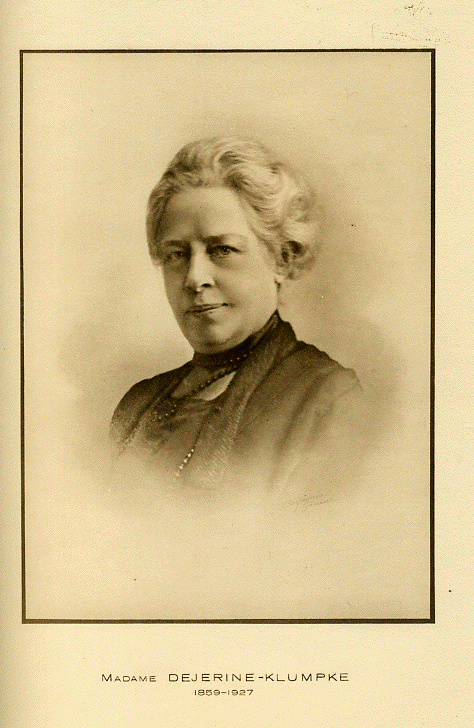 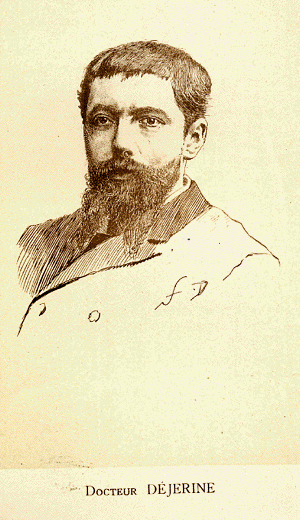 
|


 Caricature
le montrant débitant une moelle en tranches, allusion
à sa méthode anatomoclinique
Caricature
le montrant débitant une moelle en tranches, allusion
à sa méthode anatomoclinique
